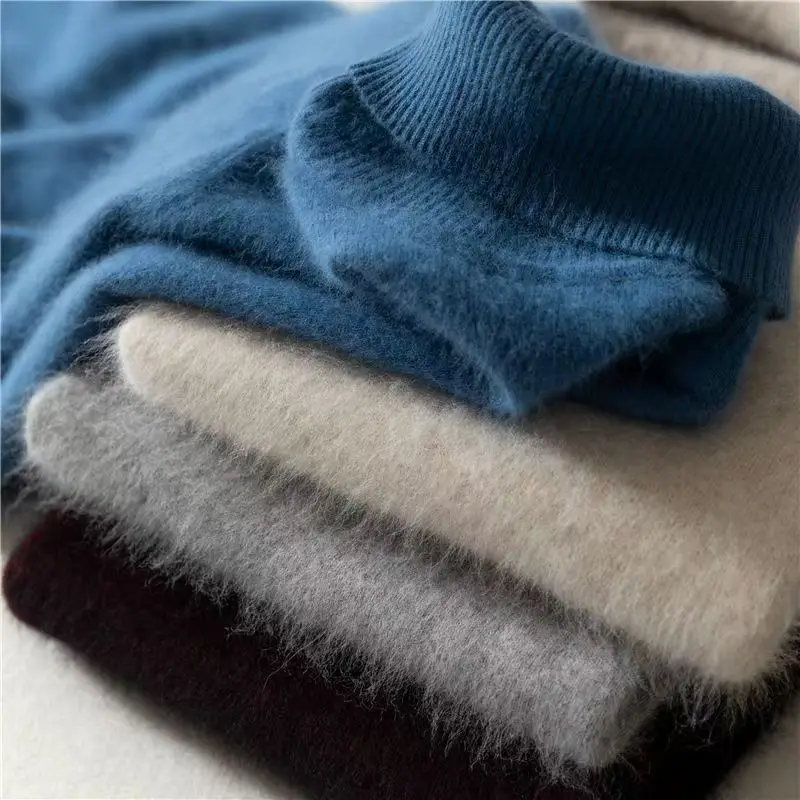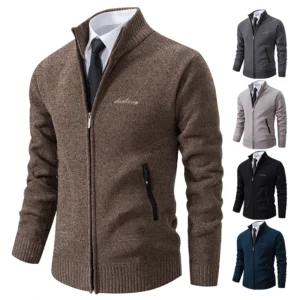Introduction: The Versatility of Cashmere Throughout the Year
Cashmere has long been treasured as one of nature’s most exceptional fibers, offering an unparalleled combination of softness, warmth, and breathability. This premium natural material stands apart from ordinary wool thanks to its remarkable ability to regulate body temperature across varying conditions. While many consider cashmere exclusively a cold-weather luxury, this misconception overlooks its incredible versatility throughout the seasons.
The secret behind cashmere’s adaptability lies in its unique physical structure. Each fiber features a hollow core that traps warm air close to the body when temperatures drop, yet allows heat and moisture to escape when things warm up. This natural thermoregulation makes cashmere an ideal companion for cashmere transitional weather periods when temperatures fluctuate unpredictably.
Quality matters tremendously in how cashmere performs across temperatures. Estate Cloth’s commitment to using only Grade A cashmere with fibers under 16 microns thickness ensures exceptional performance in various climate conditions. These ultrafine fibers create garments that maintain their insulating properties while remaining incredibly lightweight and breathable.
In this comprehensive guide, we’ll explore practical layering techniques, smart garment selection, and styling strategies to help you maximize the wearing cashmere in unpredictable weather conditions. Whether navigating cool mornings that turn into warm afternoons or moving between climate-controlled environments, you’ll discover how cashmere can become your most versatile wardrobe ally year-round.
Understanding Cashmere’s Unique Temperature-Regulating Properties
The remarkable temperature-regulating abilities of cashmere stem from its distinctive microscopic structure. Unlike ordinary wool fibers, cashmere features:
- Hollow fiber cores that trap air and create natural insulation
- Extremely fine diameter (quality cashmere measures under 16 microns) allowing for lightweight warmth
- Natural crimp that creates millions of tiny air pockets throughout the fabric
- Moisture-wicking capabilities that pull dampness away from the skin
- Breathable construction that prevents overheating
These properties work together to create a dynamic relationship between the garment and both your body temperature and the external environment. When temperatures drop, those hollow fibers and air pockets provide exceptional insulation, trapping body heat close to the skin. When things warm up, the breathable nature of the fibers allows excess heat to escape while wicking away moisture.
What truly sets cashmere apart is its remarkable warmth-to-weight ratio. High-quality cashmere can be up to eight times warmer than regular sheep’s wool while feeling significantly lighter against the skin. This makes it ideal for layering, as multiple cashmere pieces can be combined without the bulk typically associated with cold-weather dressing.
The understanding of cashmere ply and thickness is crucial when selecting pieces for temperature adaptation. Single-ply cashmere creates lightweight, breathable garments perfect for transitional weather, while two-ply and higher constructions provide progressively more insulation for colder conditions. This versatility in construction allows cashmere to perform effectively across a wide range of temperatures.
Essential Cashmere Pieces for Dynamic Layering
Building an adaptable cashmere wardrobe starts with selecting versatile pieces that work well in multiple combinations. Understanding how different weights and styles perform in various conditions will help you create a truly functional collection.
Fine-Gauge/Lightweight Cashmere
- Tanks, Tees, and Camisoles: These form the foundation of any layering strategy, sitting close to the skin and providing light insulation without bulk. Ideal under cardigans, blazers, or on their own during warmer days.
- Lightweight Cardigans: Exceptional transitional pieces that can be quickly added or removed as temperatures change. Look for styles with a relaxed fit that can layer comfortably over other garments.
- Thin Scarves and Wraps: Perhaps the most adaptable cashmere accessories, these can add strategic warmth around the neck and shoulders or be removed and easily carried when not needed.
Mid-Weight Cashmere
- Classic Pullovers: The workhorses of a cashmere collection, these versatile pieces work beautifully on their own or as mid-layers. Both crewnecks and V-necks offer distinct layering advantages—crewnecks provide more coverage while V-necks allow for visible layering.
- Cashmere turtlenecks: These provide exceptional neck protection in cooler conditions while still maintaining breathability. The added coverage makes them perfect for windy days or environments with significant temperature variations.
- Button-Front Cardigans: More substantial than their lightweight counterparts, these can function as light outerwear or interior layers depending on climate needs.
Chunky/Heavy-Gauge Cashmere
- Oversized Sweaters: These substantial pieces provide significant warmth while maintaining cashmere’s inherent breathability. They work beautifully over multiple lighter layers.
- Cable-Knit Garments: The textured construction creates additional air pockets for enhanced insulation without sacrificing breathability.
- Substantial Wraps and Ponchos: These versatile pieces can function as lap blankets during travel, elegant shoulder coverings indoors, or dramatic outerwear layers for brief outdoor excursions.
When selecting pieces, pay attention to both the ply count and the tightness of the knit, as these factors significantly impact temperature performance. Two-ply cashmere with a tight knit will provide more warmth than a looser-knit single-ply garment of the same weight.
Base Layer Fundamentals: Starting Your Temperature-Adaptive Outfit
The foundation of any successful temperature-adaptive outfit begins with thoughtfully selected base layers. These garments sit directly against your skin and set the stage for comfortable temperature regulation throughout the day.
When pairing base layers with cashmere, material choice becomes crucial for optimal performance:
- Lightweight Cashmere: The ultimate luxury choice, lightweight cashmere essentials as base layers provide natural temperature regulation from the start. Look for ultrafine single-ply construction that sits close to the body.
- Silk: This natural fiber complements cashmere beautifully, offering excellent temperature regulation while creating a smooth surface for cashmere to glide over without clinging or bunching.
- Fine Cotton: A breathable, affordable option that works well in moderate conditions. Look for long-staple cotton with minimal texture for the best layering results.
- Technical Fabrics: For active scenarios, moisture-wicking performance fabrics can provide an excellent foundation under cashmere layers.
Proper fit is essential for base layer effectiveness. Seek options that:
- Offer a snug but not restrictive fit that moves with your body
- Provide full coverage with adequate length that won’t ride up or shift
- Feature minimal seams and detailing that could create bulk under additional layers
- Have a smooth, consistent surface texture for frictionless layering
To maximize warmth without bulk, consider:
- Selecting base layers in complementary or matching colors to your cashmere for a cohesive look if layers become visible
- Opting for seamless or flat-seam construction to minimize bulk at connection points
- Choosing slightly longer base layers than mid-layers for a polished layered appearance
The right base layer creates a microclimate next to your skin that works in harmony with cashmere’s natural properties, enhancing its ability to regulate temperature throughout changing conditions.
Mid-Layer Magic: Cashmere as Your Temperature Control Center
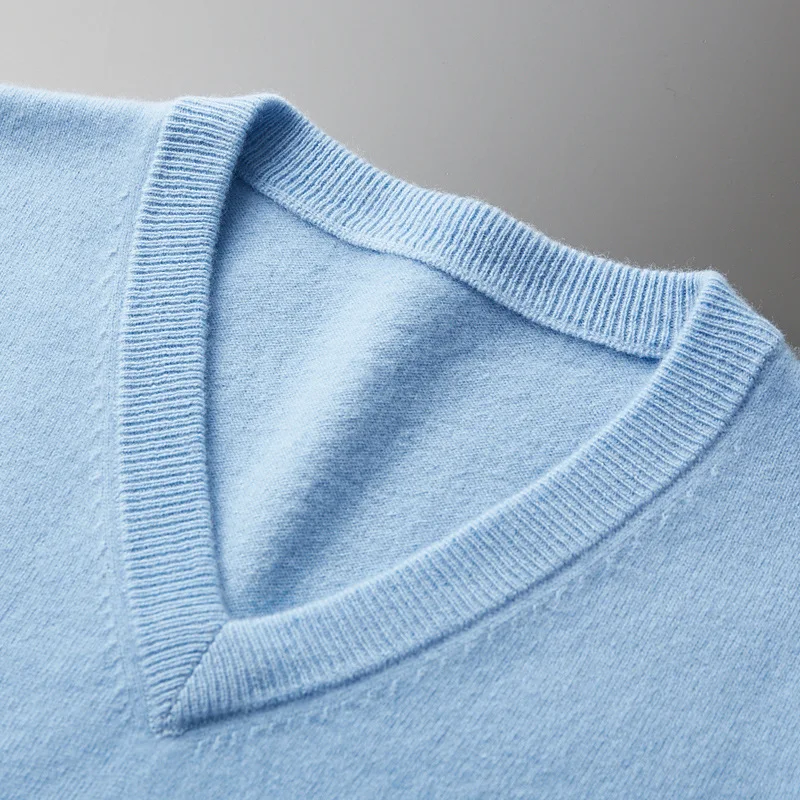
Cashmere truly shines as a mid-layer—the temperature control center of your outfit. This strategic position allows it to both insulate when temperatures drop and breathe when things warm up, making it the perfect adaptable component in your layering system.
Sweater Layering Strategies
- Lightweight Pullovers: These versatile pieces can be worn over tees or tanks and under cardigans or jackets. Their adaptability makes them ideal temperature regulators as conditions change throughout the day.
- V-Neck Styles: These create visual space and prevent the “choked” feeling that can come with multiple neck layers, making them excellent choices when combining several pieces.
- Half-Zip Options: These provide adjustable ventilation, allowing you to open the neckline when warming up or close it for added protection in cooler conditions.
Cashmere sweaters in varying weights can be strategically combined for maximum temperature control:
- Layer a lightweight cashmere tee under a mid-weight crewneck for warmth without bulk
- Combine a sleeveless cashmere shell with an open cardigan for adjustable coverage
- Use a slim-fitting pullover under a more relaxed style for textural interest and adaptable insulation
Texture and Weight Combinations
Mixing cashmere textures and weights adds both visual interest and practical functionality to your outfit:
- Pair a smooth, fine-gauge cashmere piece with a more textural cable-knit for dimension
- Layer lightweight cashmere under silk or linen for beautiful natural fiber combinations
- Combine cashmere with complementary materials like fine wool, cotton, or even leather for varied temperature response
The key to successful mid-layer cashmere is maintaining freedom of movement while creating adaptable insulation. Avoid combinations that restrict your range of motion or create excessive bulk in any one area. Instead, focus on building a system where each layer serves a specific temperature-regulation purpose while contributing to an elegant overall silhouette.
Outer Layer Strategies: Completing Your Adaptable Ensemble
The final component in your temperature-adaptive cashmere system is the outer layer, which provides protection from elements while complementing the performance of your base and mid layers. Selecting the right outer pieces allows you to maximize cashmere’s benefits in fluctuating conditions.
Ideal Cashmere-Compatible Outer Layers
- Lightweight Jackets and Blazers: Unlined or partially lined options allow cashmere’s breathability to function while adding structure and wind protection. Look for natural fibers that complement cashmere’s movement and drape.
- Trench Coats and Macs: These versatile options provide excellent coverage while typically featuring enough room to accommodate multiple cashmere layers comfortably.
- Cashmere cardigans in oversized silhouettes can themselves function as light outerwear, offering the unique benefit of consistent fiber performance throughout all your layers.
Cashmere Wraps as Transitional Outerwear
Large cashmere wraps and scarves deserve special attention as versatile outer layers:
- They can be draped over shoulders like a shawl during moderate temperature drops
- Wrapped and belted to create a poncho-like layer in cooler conditions
- Folded into a traditional scarf position when full coverage isn’t needed
- Easily removed and carried when temperatures rise
Smart Outer Layer Selection Tips
- Choose outer layers with adjustable features (zippers, buttons, ties) that allow for ventilation control
- Look for options with sufficient ease to accommodate cashmere’s natural loft without compression
- Consider the sleeve construction—raglan and drop-shoulder styles often layer more comfortably over cashmere
- For significant temperature fluctuations, select outer layers that can be easily carried when removed
The most effective outer layers complement cashmere’s natural properties rather than working against them. Avoid outer pieces with rough interior linings that could cause friction with cashmere, and instead seek smooth surfaces that allow your layers to move harmoniously together.
Adapting to Cool Mornings and Warm Afternoons: Spring/Fall Strategies
The challenging transition between cool mornings and warm afternoons presents the perfect opportunity to showcase cashmere’s remarkable adaptability. These spring and fall fluctuations require thoughtful layering that can be adjusted throughout the day without compromising style or comfort.
For the most common morning-to-afternoon scenario, consider these outfit formulations:
- The Progressive Peel: Start with a lightweight cashmere tee under a matching cardigan, with a cashmere scarf as your morning accessory. As temperatures rise, remove first the scarf, then the cardigan, maintaining a cohesive look at each stage.
- The Dress Foundation: Layer a fine-gauge cashmere pullover over a simple dress. The sweater provides necessary warmth in the morning and can be removed as temperatures climb, revealing the dress beneath. The sweater can then be tied at the shoulders or waist as an accessory.
- The Convertible Look: Begin with a layered cashmere approach for spring and fall combining a sleeveless shell under a button-front cardigan. The cardigan can be fully buttoned in the morning, worn open during transition periods, and removed entirely during peak warmth.
Managing removed layers gracefully is an essential but often overlooked skill. Consider these practical strategies:
- Master the art of the shoulder drape for removed sweaters—cashmere’s lightweight nature makes this elegant rather than bulky
- Use a lightweight bag large enough to accommodate folded cashmere pieces without crushing them
- Learn simple folding techniques that minimize visible creasing when layers are worn again later
The key to successful morning-to-afternoon transitions lies in selecting cashmere pieces that function both together and independently. Each layer should look intentional and complete on its own, creating a succession of polished looks as your outfit evolves throughout the day.
Mastering Indoor Temperature Fluctuations: Office and Travel Solutions
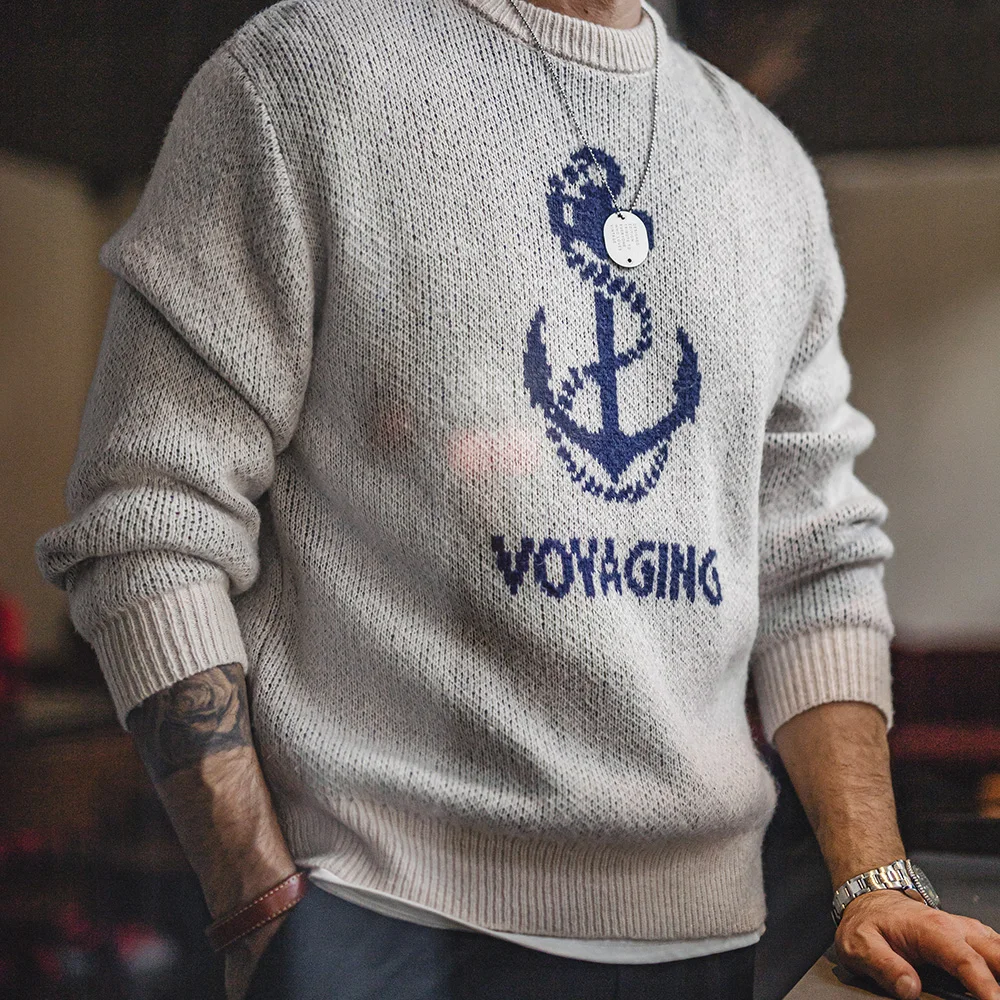
Indoor environments present unique temperature challenges, with office HVAC systems and travel conditions often creating unpredictable hot and cold zones. Cashmere’s responsive nature makes it ideally suited to these variable conditions.
Office Environment Strategies
The workplace often features significant temperature variations between different areas, requiring adaptable solutions:
- Keep a dedicated cashmere cardigan or wrap at your workspace that coordinates with multiple outfits
- Layer cashmere for professional office environments using pieces that maintain authority even when removed, like structured cashmere blazers
- Select neutral-toned base layers that look appropriate if you need to remove outer layers during presentations or meetings
- Consider sleeve length strategically—three-quarter sleeves offer a professional compromise between cooling and coverage
Travel-Specific Solutions
Travel presents particular temperature adaptation challenges that cashmere addresses beautifully:
- Select wrinkle-resistant cashmere pieces (typically those with tighter knits and higher ply counts)
- Pack multi-functional items like cashmere wraps that serve as scarves, blankets, or even rolled pillows
- Create a plane outfit formula with multiple thin cashmere layers rather than one bulky piece
- Consider cashmere accessories like socks and beanies that take minimal packing space but add significant warmth when needed
For both office and travel scenarios, the key lies in selecting cashmere pieces that transition easily between temperature zones while maintaining a polished appearance. Avoid styles with elements that appear obviously casual or incomplete when worn independently. Instead, focus on pieces with clean lines and versatile necklines that layer gracefully without sacrificing professional appearance.
Embracing “Summer Cashmere”: Lightweight Options for Warmer Days
While cashmere is traditionally associated with cooler weather, the concept of “summer cashmere” has gained well-deserved attention. These specialized lightweight pieces extend cashmere’s season well into warmer months by leveraging its natural temperature-regulating properties.
Summer cashmere is characterized by:
- Single-ply construction creating exceptionally lightweight fabrics
- Looser, more open knit structures that enhance air circulation
- Lighter color palettes that reflect rather than absorb heat
- Simplified silhouettes that minimize fabric coverage where cooling is desired
For warmer weather, consider these strategic approaches:
- Short sleeve cashmere sweaters provide the luxurious feel of cashmere while allowing air flow around the arms
- Sleeveless cashmere shells offer core temperature regulation while maximizing cooling elsewhere
- Lightweight cashmere cardigans serve as perfect evening layers when temperatures drop after sunset
- Fine-gauge cashmere wraps provide adjustable coverage in aggressively air-conditioned environments
The benefits of summer cashmere compared to synthetic alternatives become particularly apparent in warm weather:
- Cashmere wicks moisture away from the skin rather than trapping it like many synthetics
- The natural fiber breathes continuously, preventing the clammy feeling often associated with temperature changes
- Cashmere resists odor absorption, remaining fresh through temperature fluctuations that might cause synthetic fabrics to develop unwanted scents
With thoughtful selection, cashmere can become an essential part of your warm-weather wardrobe, particularly for evening events, travel, and environments with significant air conditioning.
Style Mastery: Creating a Cashmere-Centered Adaptable Wardrobe
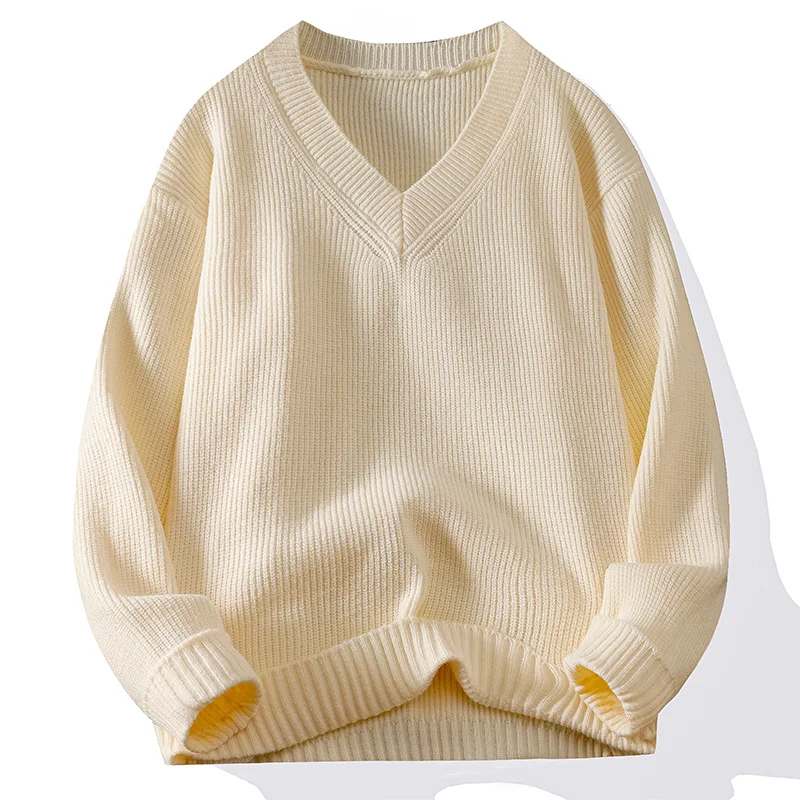
Building a cashmere collection focused on temperature adaptability requires thoughtful curation. The goal is to select pieces that work harmoniously together while each serving specific roles in your layering system.
Essential Pieces for a Versatile Cashmere Collection
Start with these foundation pieces that offer maximum adaptability:
- A lightweight cashmere tee or shell in a neutral tone
- A mid-weight V-neck or crewneck pullover in your most flattering color
- A button-front or open cardigan that coordinates with both pieces above
- A substantial cashmere wrap or oversized scarf that can function as a light outer layer
From this foundation, expand strategically with pieces that fill specific temperature adaptation needs in your lifestyle.
Color Selection Strategy
To maximize the versatility of your cashmere collection:
- Build around a core neutral palette (blacks, navies, grays, camels, creams) for maximum mixing potential
- Add strategic accent colors that work across seasons (berry tones, muted blues, soft greens)
- Consider how colors layer visually—lighter pieces generally work better as base layers, while darker tones create slimming outer layers
- Select colors that transition well between seasons, avoiding those strongly associated with a specific time of year
Creating Cashmere Capsules
Versatile cashmere pieces for all seasons form the backbone of an adaptable wardrobe. Consider organizing your collection into temperature-based capsules:
- Cool Weather Capsule: Heavier gauge turtlenecks, substantial cardigans, and cable-knit pullovers
- Transitional Weather Capsule: Mid-weight V-necks, button-front cardigans, and versatile wraps
- Warm Weather Capsule: Fine-gauge tees, shells, and lightweight open cardigans
The most versatile pieces will appear in multiple capsules, demonstrating their exceptional value in your wardrobe. By thoughtfully building these collections, you’ll develop a sophisticated approach to temperature adaptation that maintains elegance throughout the seasons.
Cashmere Wrap Sweaters, Women's Cashmere Pullovers
$75.89 Select options This product has multiple variants. The options may be chosen on the product pageCashmere Cable Knit Sweaters, Women's Cashmere Pullovers
Price range: $111.82 through $112.93 Select options This product has multiple variants. The options may be chosen on the product pageCropped Cashmere Sweaters, Women's Cashmere Pullovers
$155.77 Select options This product has multiple variants. The options may be chosen on the product page- Price range: $102.02 through $109.37 Select options This product has multiple variants. The options may be chosen on the product page
Oversized Cashmere Sweaters, Plus Size Cashmere Sweaters, Women's V-Neck Cashmere Sweaters
$136.87 Select options This product has multiple variants. The options may be chosen on the product page- Price range: $108.11 through $130.03 Select options This product has multiple variants. The options may be chosen on the product page
Preserving Your Investment: Care Tips for Long-Lasting Cashmere
The temperature-regulating properties of cashmere remain at their peak when the garments are properly maintained. Caring for your cashmere correctly ensures that those hollow fibers maintain their structure and performance across seasons.
Essential Cashmere Care Guidelines
Washing Techniques:
– Hand wash using lukewarm water and a mild detergent specifically formulated for wool or cashmere
– Soak gently without rubbing or wringing, which can damage the delicate fibers
– Rinse thoroughly but gently until water runs clear
– Consider professional dry cleaning only for structured or lined cashmere pieces
Proper Drying Methods:
– Never wring cashmere; instead, press water out gently between clean towels
– Reshape garments while damp to maintain proper dimensions
– Dry flat on a clean towel away from direct sunlight or heat sources
– Allow complete drying before folding or wearing
Between-Season Storage:
– Clean all items before storing to remove invisible soils that attract moths
– Fold rather than hang cashmere to prevent stretching
– Store in breathable containers with cedar blocks (not mothballs)
– Choose cool, dry storage locations away from direct sunlight
Following the cashmere sweater care instructions specific to your garments will ensure they maintain their temperature-regulating properties year after year. Regular gentle maintenance, like removing pills with a cashmere comb and addressing minor issues promptly, extends the functional lifespan of your cashmere collection.
Remember that quality cashmere actually improves with proper care, developing a softer hand while maintaining its remarkable temperature-adapting properties. This makes it a truly sustainable investment in your comfort across changing conditions.
Your Cashmere Questions Answered: Temperature Adaptation FAQ
Can cashmere really be worn in summer?
Yes, specially designed summer cashmere can be comfortable in warmer weather. Look for single-ply construction, loose knit structures, and lightweight designs. Summer cashmere is particularly valuable in air-conditioned environments or evening settings when temperatures drop slightly.
What’s the difference between cashmere weights and how do they affect temperature regulation?
Cashmere weight refers to both the thickness of individual fibers and the density of the knit. Lighter weights (around 7-10 gauge) create more breathable garments ideal for layering and warmer conditions. Heavier weights (3-5 gauge) provide more substantial insulation for colder environments. The looser the knit structure, the more air circulation it allows.
How do I pack cashmere for travel to unpredictable climates?
Focus on lightweight, wrinkle-resistant pieces that layer easily. Pack multiple thin layers rather than one bulky piece, and include versatile items like wraps that can serve multiple purposes. Roll rather than fold your cashmere to minimize creasing, and consider vacuum storage bags for longer trips to save space.
Does the quality of cashmere affect its temperature regulation?
Absolutely. Higher quality cashmere with longer, finer fibers creates more effective insulating air pockets while remaining exceptionally breathable. Premium cashmere like that used by Estate Cloth (Grade A with fibers under 16 microns) will regulate temperature significantly better than lower-grade options with shorter, coarser fibers.
How can I layer cashmere without looking bulky?
Select varying weights appropriate for each layer—thinner, more fitted pieces underneath and slightly more relaxed pieces on top. Choose complementary necklines that nest well together (like crews over V-necks). Fine-gauge cashmere wool cardigans work particularly well as outer layers without adding excessive bulk.
What’s the best way to transition cashmere pieces between seasons?
Focus on versatile pieces in mid-weights that can be layered or worn alone. As seasons change, adjust your styling rather than completely swapping out pieces—wear cashmere pullovers alone in early fall, then layer them under cardigans as temperatures drop. Accessories like lightweight scarves can extend the seasonality of core cashmere pieces.
By mastering the art of cashmere layering across changing temperatures, you transform this exceptional natural fiber from a seasonal luxury to a year-round essential. The remarkable adaptability of quality cashmere makes it uniquely suited to our increasingly unpredictable climate patterns and variable indoor environments. With thoughtful selection and strategic styling, your cashmere collection becomes the foundation of comfort and elegance regardless of what the thermometer reads.

